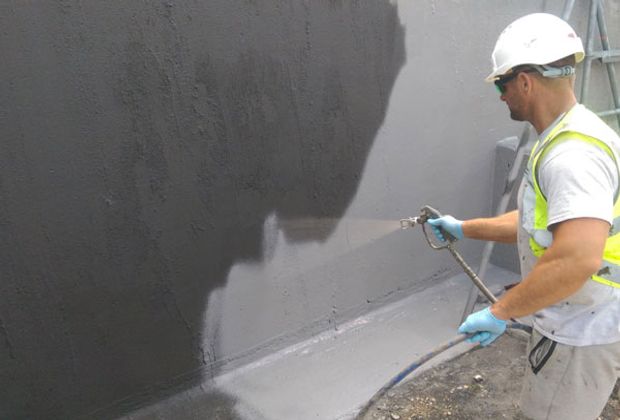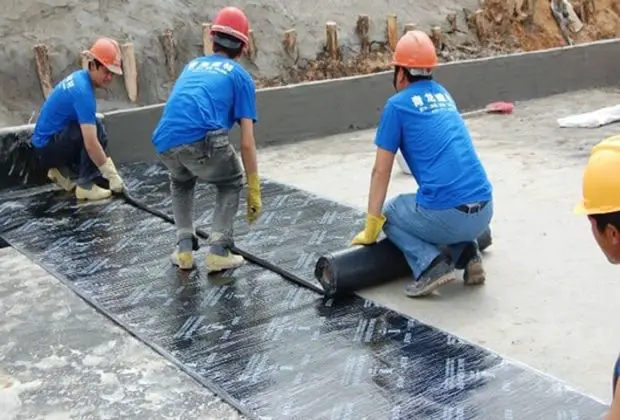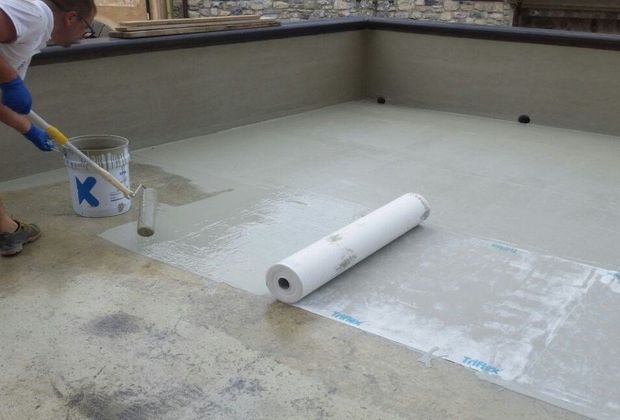What is Waterproofing?
Waterproofing in construction is a process of making the building structure impervious or water-resistant. This process is essential to prevent the entry of water into the building.
Waterproofing can be done over different structural member’s surfaces such as foundations, walls, roofs, etc. Areas with more rainfall and flooding events must be waterproofed.
Basement waterproofing and foundation waterproofing are a must in case the groundwater table is high. Because hydrostatic pressure is exerted by the water in the soil on the basement floors and walls which may cause structural damages along with moisture-related issues like mold, decay, and mildew.
Usually, in monsoons, one can notice dampness or water seepage on the ceilings, walls after the rainfall, or flooding. this is caused due to poor waterproofing treatment.
Waterproofing methods
There are 5 types of waterproofing methods are there.
- Cementitious Waterproofing
- Bituminous Membrane Waterproofing
- Bituminous Coating
- Liquid Waterproofing Membrane
- Polyurethane Liquid Membrane
1. Cementitious Waterproofing

Cementitious type of waterproofing is the easiest method of waterproofing in building construction. As the cementitious products are easily available in the market, As they are easy to mix and apply over the required area.
Cementitious Waterproofing is done to the internal wet areas, Such as toilets, bathroom waterproofing, etc.
Cementitious waterproofing can be used over various places such as
- Dams
- Bridges
- Water treatment plants
- Sewage treatment plants
- Railyway annd subway systems
- Tunnels
- Parking structures
- Marine cargo ports and docks
2. Bituminous Membrane Waterproofing

Bituminous Membrane Waterproofing is the most popular waterproofing method. This type of waterproofing is mostly used for low-sloped roofs or used for terrace waterproofing.
It consists of a torch on the layer and a self-adhesive membrane.
The self-adhesive compounds consist of asphalt, filler, and polymers, to improve the adhesion certain resins and oils can also be added.
3. Bituminous Coating Waterproofing

This type of waterproofing is usually done over the surfaces such as concrete foundation, etc, Bituminous coating or asphalt coating is a protective coat based on its formulation and polymerization grade.
The Bituminous Coating waterproofing method is not suitable for external surfaces unless it is added with some flexible material like acrylic-based polymers or polyurethane to enhance its capability to withstand temperature.
4. Liquid Waterproofing Membrane

Liquid waterproofing membranes are applied in three coats, one primer coat, and two topcoats. The coating can be done in various forms such as spraying, trowel, or roller.
Due to the thin layer, the liquid waterproofing membrane offers more flexibility than cementitious waterproofing.
The durability of a liquid waterproofing membrane varies based on the polymer used in the liquid.
5. Polyurethane Liquid Membrane waterproofing

Polyurethane liquid membrane is the most expensive waterproofing method among other methods. It is used for flat roof areas and is exposed to weathering. It also offers high flexibility.
Before using this type of waterproofing one must consider the moisture content of the slab, as it is very sensitive to the moisture content failing to do so may cause peeling or de-bonding of the membrane.
Importance of waterproofing
- Waterproofing helps to protect the interior of the building from water damages.
- It also prevents onset of health problmes
- Saves your money with only one time investment.
Also Read – What is sunken slab?| Applications | Advantages | Disadvantages

